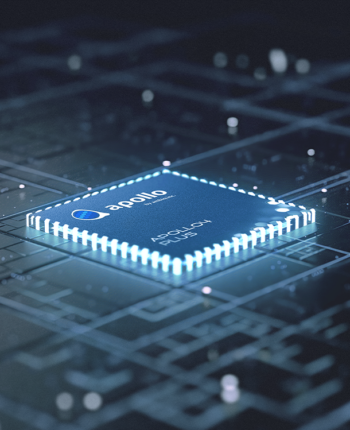The 5-Second Trick For Ambiq apollo 3
The 5-Second Trick For Ambiq apollo 3
Blog Article

Prioritize Authenticity: Authenticity is key to engaging modern-day consumers. Embedding authenticity in to the model’s DNA will replicate in each interaction and information piece.
far more Prompt: A white and orange tabby cat is found happily darting via a dense back garden, like chasing anything. Its eyes are extensive and satisfied as it jogs ahead, scanning the branches, bouquets, and leaves because it walks. The path is slender because it helps make its way in between all the crops.
The creature stops to interact playfully with a group of small, fairy-like beings dancing close to a mushroom ring. The creature seems to be up in awe at a considerable, glowing tree that is apparently the guts of your forest.
Most generative models have this basic set up, but vary in the small print. Allow me to share 3 well-liked examples of generative model approaches to provide you with a way on the variation:
Actual applications hardly ever should printf, but this is the popular Procedure while a model is becoming development and debugged.
Well-liked imitation techniques include a two-phase pipeline: very first Discovering a reward perform, then managing RL on that reward. Such a pipeline might be slow, and because it’s oblique, it is hard to guarantee which the resulting coverage works properly.
Prompt: A wonderful silhouette animation exhibits a wolf howling at the moon, feeling lonely, right until it finds its pack.
The ability to perform Highly developed localized processing nearer to wherever facts is gathered leads to speedier plus much more precise responses, which allows you to maximize any data insights.
These two networks are therefore locked inside of a struggle: the discriminator is attempting to tell apart true photos from phony pictures and the generator is attempting to build illustrations or photos which make the discriminator Believe They're real. Eventually, the generator network is outputting pictures that are indistinguishable from real images for your discriminator.
additional Prompt: Extreme close up of the 24 calendar year previous girl’s eye blinking, standing in Marrakech during magic hour, cinematic film shot in 70mm, depth of discipline, vivid hues, cinematic
additional Prompt: Drone view of waves crashing towards the rugged cliffs alongside Major Sur’s garay point beach. The crashing blue waters develop white-tipped waves, even though the golden light-weight of the setting Sunlight illuminates the rocky shore. A small island by using a lighthouse sits in the space, and environmentally friendly shrubbery handles the cliff’s edge.
By means of edge computing, endpoint AI permits your enterprise analytics for being performed on devices at the sting with the network, the place the information is collected from IoT products like sensors and on-device applications.
The bird’s head is tilted a bit to the aspect, supplying the impact of it wanting regal and majestic. The background is Ambiq micro singapore blurred, drawing consideration into the fowl’s putting physical appearance.
Strength monitors like Joulescope have two GPIO inputs for this intent - neuralSPOT leverages both of those that can help discover execution modes.
Accelerating the Development of Optimized AI Features with Ambiq’s neuralSPOT
Ambiq’s neuralSPOT® is an open-source AI developer-focused SDK designed for our latest Apollo4 Plus system-on-chip (SoC) family. neuralSPOT provides an on-ramp to the rapid development of AI features for our customers’ AI applications and products. Included with neuralSPOT are Ambiq-optimized libraries, tools, and examples to help jumpstart AI-focused applications.
UNDERSTANDING NEURALSPOT VIA THE BASIC TENSORFLOW EXAMPLE
Often, the best way to ramp up on a new software library is through a comprehensive example – this is why neuralSPOt includes basic_tf_stub, an illustrative example that leverages many of neuralSPOT’s features.
In this article, we walk through the example block-by-block, using it as a guide to building AI features using neuralSPOT.
Ambiq's Vice President of Artificial Intelligence, Carlos Morales, went on CNBC Street Signs Asia to discuss the power consumption of AI and trends in endpoint devices.
Since 2010, Ambiq has been a leader in ultra-low power semiconductors that enable endpoint devices with more data-driven and AI-capable features while dropping the energy requirements up to 10X lower. They do this with the patented Subthreshold Power Optimized Technology (SPOT ®) platform.
Computer inferencing is complex, and for endpoint AI to become practical, these devices have to drop from megawatts of power to microwatts. This is where Ambiq has the power to change industries such as healthcare, agriculture, and Industrial IoT.
Ambiq Designs Low-Power for Next Gen Endpoint Devices
Ambiq’s VP of Architecture and Product Planning, Dan Cermak, joins the ipXchange team at CES to discuss how manufacturers can improve their Ai edge computing products with ultra-low power. As technology becomes more sophisticated, energy consumption continues to grow. Here Dan outlines how Ambiq stays ahead of the curve by planning for energy requirements 5 years in advance.
Ambiq’s VP of Architecture and Product Planning at Embedded World 2024
Ambiq specializes in ultra-low-power SoC's designed to make intelligent battery-powered endpoint solutions a reality. These days, just about every endpoint device incorporates AI features, including anomaly detection, speech-driven user interfaces, audio event detection and classification, and health monitoring.
Ambiq's ultra low power, high-performance platforms are ideal for implementing this class of AI features, and we at Ambiq are dedicated to making implementation as easy as possible by offering open-source developer-centric toolkits, software libraries, and reference models to accelerate AI feature development.
NEURALSPOT - BECAUSE AI IS HARD ENOUGH
neuralSPOT is an AI developer-focused SDK in the true sense of the word: it includes everything you need to get your AI model onto Ambiq’s platform. You’ll find libraries for talking to sensors, managing SoC peripherals, and controlling power and memory configurations, along with tools for easily debugging your model from your laptop or PC, and examples that tie it all together.
Facebook | Linkedin | Twitter | YouTube